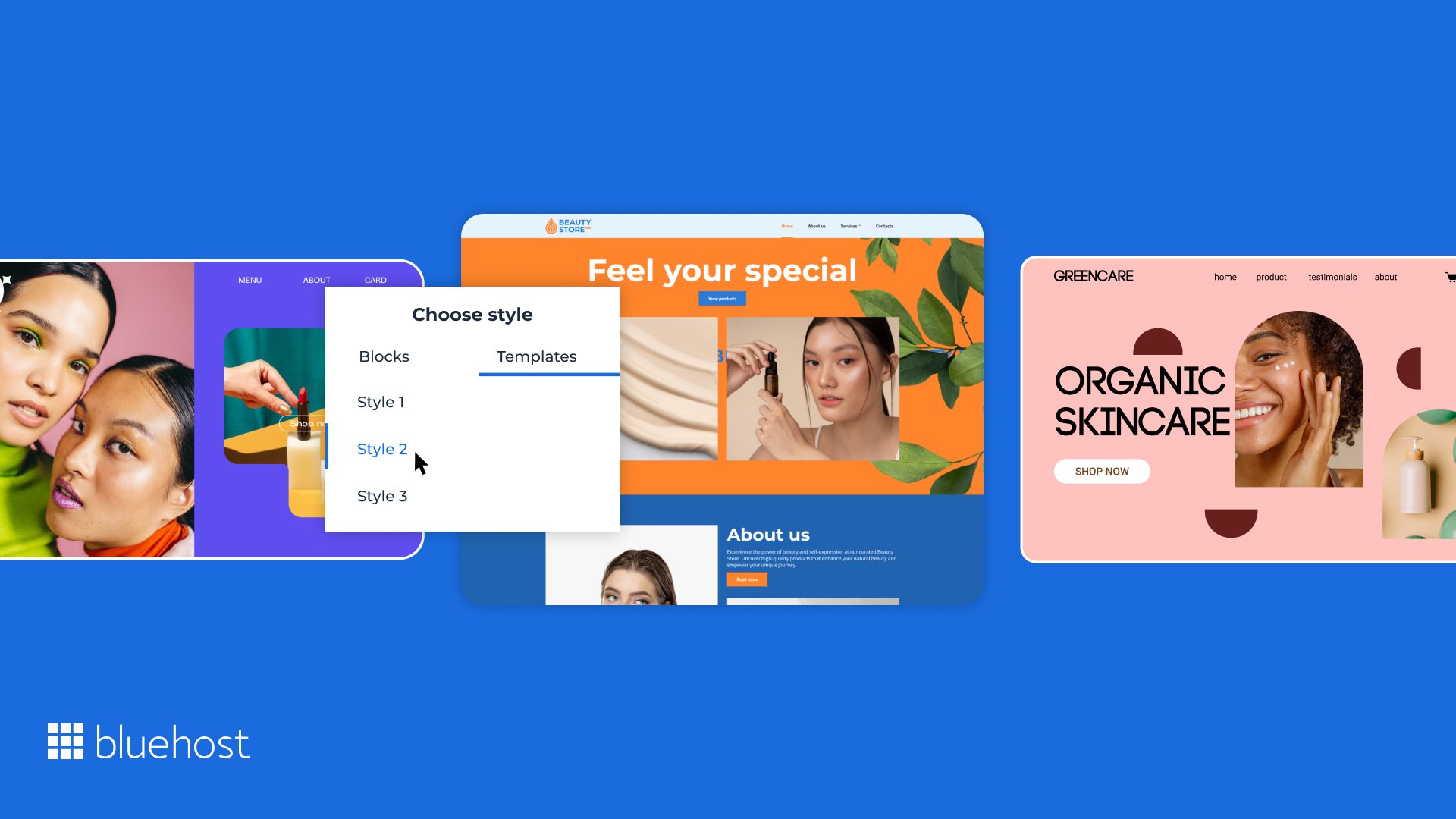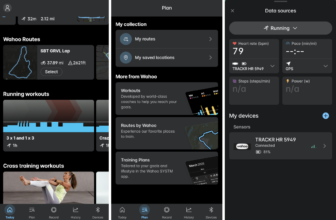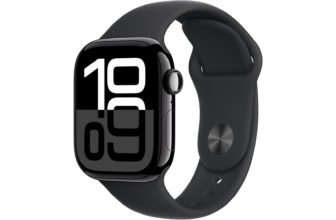
Check out our latest products
Bluehost gives you two options for creating a WordPress-powered website: the traditional WordPress interface or the Bluehost WonderSuite website builder. Like fellow website builders from GoDaddy and Hostinger, Bluehost has adopted AI tools to make building sites even easier and faster. Now, if you opt out of WordPress, you must use the new AI-powered WonderSuite experience when starting a site. You simply answer questions and let the builder generate text and image suggestions (or provide SEO and commerce help). WonderSuite breaks everything into simple blocks to customize and rearrange in its WonderTheme template. For my test, I created a podcast-focused website that features a big pair of headphones on the home page.
(Credit: Bluehost)
Bluehost features just one WordPress theme, but the sheer variety of drag-and-drop templates and layouts lets you make near-endless tweaks. Although you can’t change your theme selection (a common website builder limitation), you can alter numerous visual components within a selected template, such as fonts and background colors. In addition, you can swap between desktop and mobile previews to see how your site looks on different displays.
This stylistic freedom doesn’t apply to image editing. You can import your own photos, including a logo, and browse Bluehost’s stock photo library. However, you can’t really edit those photos, besides resizing them or adding a link and alt text metadata information. Wix gives you more robust photo editing options.
Get Our Best Stories!

All the Latest Tech, Tested by Our Experts
By clicking Sign Me Up, you confirm you are 16+ and agree to our Terms of Use and Privacy Policy.
Thanks for signing up!
Your subscription has been confirmed. Keep an eye on your inbox!
Bluehost doesn’t skimp on tools. Under Sections, you can browse many different elements to add to your site. Each element presents you with a few examples to choose from before dragging it onto your page. The standard options include text forms, video embeds, and image galleries. More bespoke elements include a countdown timer, map, and carveout for custom HTML/CSS.
Here you access e-commerce features, such as product listings, reviews, promotions, and pricelists. With WooCommerce, you can sell tens of thousands of different products, physical or digital, as well as subscription memberships.

(Credit: Bluehost/PCMag)
Bluehost’s website builder is simple to use, but placing all elements under the same Sections banner makes it take longer to find what you’re looking for. Once an element was on the page, I spent a few more seconds than I wanted adjusting values to get what I desired. Establishing a workflow won’t take long, though.
You can view all of your site’s pages, alter global appearance settings, and enable transition animations. Likewise, you can enter business and shipping information, as well as social media account credentials, if you want your site to sync with Facebook or Twitter/X. It’s easy to track traffic progress via Google Analytics, too.
The website builder also includes WordPress-specific features that make your site shine. For example, you can create a WordPress.com blog that lives on your site or swap back and forth between the simplified website builder and fully featured WordPress admin interface at any time. In that way, Bluehost serves as useful training wheels as you teach yourself to ride the WordPress bike. To learn even more, check out how to get started with WordPress. For more on website building, check out our stories on how to create a website and 10 SEO tips to boost your traffic.

(Credit: Bluehost/PCMag)

![[K-Beauty] Rose Vitamin Oil to Foam | Daily Face Wash Oil Based Cleanser | Korean Rose Oil Foaming Face Cleanser | Hydrating Facial Cleanser for Dry Sensitive Skin (3.88 oz)](https://i1.wp.com/m.media-amazon.com/images/I/71sX7yIuXRL._SL1500_.jpg?w=300&resize=300,300&ssl=1)





![[ 8 Pack ] Plastic Storage Baskets With Lids, Small Pantry Organization, Stackable Storage Bins, Household Organizers for Cabinets, Countertop, Drawers, Under Sink or On Shelves,Gray](https://i1.wp.com/m.media-amazon.com/images/I/81NMRFDwXYL._AC_SL1500_.jpg?w=300&resize=300,300&ssl=1)
![[Luxury] Kitchen Soap Dispenser Set – 16OZ Black Glass Bottle, Stainless Steel Pump, Instant Dry Tray, Waterproof Labels, Non-Slip Silicone Pad, and Dish Brush | Upgrade for Your Kitchen and Bathroom](https://i3.wp.com/m.media-amazon.com/images/I/71TQcJWiGtL._AC_SL1500_.jpg?w=300&resize=300,300&ssl=1)





